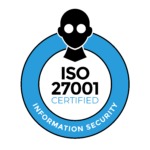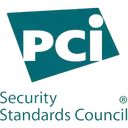The General Data Protection Regulation (GDPR) has fundamentally reshaped how organizations handle personal data in the EU and beyond. For businesses navigating compliance requirements, understanding the potential costs involved is crucial for proper budgeting and resource allocation. Whether you’re preparing for your first GDPR audit or looking to optimize your ongoing compliance program, having realistic cost expectations helps prevent unwelcome financial surprises.
GDPR compliance isn’t just about avoiding hefty fines—up to €20 million or 4% of global annual turnover. It’s about building customer trust, meeting contractual obligations, and protecting your brand reputation. The investment in proper data protection practices typically pays dividends through improved data governance and reduced risk exposure.
In this guide, we’ll break down the realistic costs of GDPR audits and compliance programs across different organization sizes. We’ll explore the key factors that drive costs up or down, outline specific budget line items, and share practical strategies to reduce your compliance burden without cutting corners.
Why it matters: Organizations often underestimate both the initial and ongoing costs of GDPR compliance. By understanding the complete cost picture—from initial assessments to ongoing monitoring—you can develop a more accurate budget and avoid the costly cycle of reactive compliance.
We’ve analyzed industry data, vendor pricing, and real-world implementation experiences to provide you with actionable insights on:
- Typical cost ranges for organizations of different sizes
- The specific components that make up your GDPR compliance budget
- Key cost drivers that may increase or decrease your specific expenses
- Practical strategies to reduce costs without increasing compliance risk
- How to evaluate and justify your GDPR compliance investment
Let’s dive into what you can realistically expect to spend on your journey to GDPR compliance, starting with a breakdown by organization size.
Cost components
A GDPR audit involves several distinct cost categories that organizations need to budget for. Understanding these components helps create a realistic financial plan for compliance efforts.
Readiness assessments form the foundation of your GDPR compliance journey. These evaluations identify gaps between your current data practices and GDPR requirements. Small companies might spend $2,000-$20,000 on a basic assessment, while enterprises with complex data ecosystems could invest $50,000-$250,000+ for comprehensive multi-jurisdictional evaluations.
Remediation work typically represents the largest portion of your compliance budget. This includes implementing technical controls, updating policies, and addressing identified gaps. Organizations report spending anywhere from $5,000 for small businesses to several million dollars for large enterprises with legacy systems requiring significant overhauls.
Auditor fees vary based on the scope and complexity of your organization. Formal GDPR certification audits (like ISO 27701) scale with employee count and processing activities. Expect to pay $5,000-$75,000 for certification-related audit processes, with multi-site enterprises at the higher end of this range.
Compliance tools and platforms provide automation and ongoing monitoring capabilities. Privacy management software typically costs $1,600-$12,000 annually for small businesses, while mid-market companies often spend $15,000-$60,000 per year. Enterprise deployments frequently exceed $100,000 annually for comprehensive privacy suites.
Internal staff time represents a significant but often underestimated expense. This includes privacy professionals’ salaries (DPOs, privacy managers), training costs, and existing staff time redirected to compliance activities. Many organizations report allocating 30-40% of their total GDPR program spend to personnel costs.
Factors influencing cost
The cost of GDPR compliance isn’t one-size-fits-all. Several key factors determine where your organization falls within the cost spectrum.
Company size directly impacts your compliance expenses. Larger organizations have more data, systems, and staff requiring assessment and training. This increases both initial audit scope and ongoing compliance maintenance costs. A small business (under 50 employees) might achieve initial compliance for $5,000-$75,000, while enterprises frequently invest millions.
Your industry and data sensitivity significantly influence compliance requirements. Healthcare, finance, and adtech companies processing sensitive personal data face stricter scrutiny and higher compliance burdens. These organizations typically need more robust safeguards, frequent audits, and specialized legal counsel, driving costs toward the upper end of industry ranges.
Geographic complexity creates additional compliance layers. Organizations operating across multiple EU jurisdictions must navigate different regulatory interpretations and enforcement approaches. Companies with established EU presence need more comprehensive assessments than those with limited EU exposure. Cross-border data transfer mechanisms (post-Schrems II) add significant technical and legal costs.
The volume of data subject requests drives ongoing operational expenses. Organizations receiving numerous data access, deletion or portability requests face substantial fulfillment costs. Without automation, each manual request costs approximately $1,400-$1,500 to process according to Gartner research. High-volume environments require investing in automation to control these recurring expenses.
Your existing security posture affects remediation costs. Organizations with established frameworks like SOC 2 or ISO 27001 typically have lower GDPR compliance costs since many security controls already exist. Companies starting from scratch face steeper remediation investments to establish fundamental data protection practices.
Your compliance objectives determine program scope and cost. Basic regulatory compliance requires different investments than pursuing formal certifications or building comprehensive global privacy programs. Organizations seeking competitive advantage through demonstrable compliance typically invest more than those pursuing minimum viable compliance.
Example scenarios
Organizations face dramatically different GDPR audit costs based on their size, industry, and data practices. Let’s examine how these variables impact real-world compliance spending through three hypothetical examples.
Scenario 1: Early-stage SaaS startup (15 employees)
TechNova is a B2B software startup with minimal EU customer data and straightforward processing activities. Their GDPR compliance journey looks like:
Initial gap assessment: $5,000. TechNova engages a boutique compliance firm for a fixed-fee gap analysis, covering their limited data processes and third-party relationships. The assessment takes just three weeks.
Privacy documentation and policy updates: $3,500. Because of their limited scope, basic privacy notices and consent mechanisms require minimal customization.
DSAR process implementation: $2,000. With low request volume expected, they implement a simple manual process using templates and train two team members.
Outsourced DPO services: $12,000/year. Rather than hiring in-house, they contract a part-time DPO who provides quarterly reviews and on-call support.
Total first-year cost: ~$22,500. TechNova completes initial compliance in under 3 months, with ongoing maintenance requiring minimal resources. The key cost-saving factor was their limited data footprint.
Scenario 2: Mid-market retailer (275 employees)
FashionDirect is a growing e-commerce company with customers across Europe, collecting significant customer data including purchase history and marketing preferences. Their compliance costs reflect greater complexity:
Comprehensive audit and data mapping: $45,000. A more thorough assessment involving multiple departments, numerous third-party processors, and complex marketing systems requires 8 weeks to complete.
Remediation and technical fixes: $125,000. Engineering time to implement proper consent mechanisms, data minimization practices, and enhanced security measures consumes significant resources.
Privacy platform implementation: $35,000/year. To manage regular DSARs and maintain records of processing activities, they invest in a dedicated privacy management platform.
Legal reviews and DPAs: $50,000. Updating vendor contracts, reviewing cross-border transfers, and developing compliant marketing practices requires substantial legal work.
Partial in-house privacy team: $90,000/year. They hire a dedicated privacy manager and allocate 25% of a security analyst’s time to ongoing compliance.
Total first-year cost: ~$345,000. Their implementation timeline spans 8 months, with significant effort required to address marketing data practices. Recurring costs will remain substantial due to customer data volume and regular DSAR requests.
Scenario 3: Multinational financial services firm (5,000+ employees)
GlobalFinance operates across multiple EU jurisdictions with vast amounts of sensitive personal data. Their enterprise-scale GDPR program reflects both their size and regulatory risk:
Multi-jurisdictional audit program: $300,000. A Big Four firm conducts comprehensive assessments across business units, evaluating processes in five different EU countries.
System remediation and process redesign: $1.8 million. Legacy systems require significant engineering resources to implement data minimization, access controls, and retention policies compliant with GDPR.
Enterprise privacy platform: $225,000/year. Their solution includes automated DSAR management, consent tracking, and integration with existing GRC tools.
Legal and cross-border remediation: $450,000. Extensive work on Schrems II compliance, Standard Contractual Clauses, and jurisdiction-specific requirements demands specialized legal counsel.
Full privacy office: $750,000/year. They establish a dedicated team including a senior DPO, privacy analysts, and training resources across regions.
Certification and validation: $175,000. They pursue ISO 27701 certification to demonstrate compliance and satisfy enterprise customer requirements.
Total first-year program cost: ~$3.7 million. Their implementation spans 18 months, with significant ongoing costs. However, this investment proves cost-effective compared to potential fines (up to 4% of global revenue) and business disruption risks.
The contrast between these scenarios demonstrates how GDPR audit and compliance costs scale with organizational complexity, data processing scope, and regulatory risk profile. For most organizations, the largest ongoing costs shift from initial assessment to operational compliance management over time.
Cost-saving tips
Start by minimizing your data footprint. The single most effective way to reduce GDPR compliance costs is to collect and retain less personal data. This reduces your risk profile, narrows audit scope, and simplifies ongoing compliance. Conduct a thorough data inventory and purge unnecessary information before beginning your audit process.
Leverage existing compliance investments. If you already have SOC 2, ISO 27001, or other security certifications in place, map those existing controls to GDPR requirements. This control mapping allows you to reuse documentation, processes, and evidence rather than building compliance from scratch. Many organizations find 40-60% of their GDPR controls already exist in other frameworks.
Automate evidence collection and DSAR processing. Manual data subject access request fulfillment can cost up to $1,400 per request according to industry research. Implementing automation for both DSARs and ongoing evidence collection provides immediate ROI and reduces the personnel cost of compliance maintenance.
Prepare thoroughly before engaging auditors. External audit firms bill by the day, and disorganized clients pay for that time. Create a structured evidence repository, prepare your documentation in advance, and conduct an internal gap assessment before bringing in experts. This preparation can cut audit time and costs by as much as 50%.
Consider outsourced or fractional privacy expertise. For small and mid-size organizations, hiring a full-time Data Protection Officer or privacy team may be unnecessary. Outsourced DPO services or fractional privacy experts can provide the required expertise at significantly lower costs, often through predictable monthly retainer models.
Scope your initial audit strategically. Begin with a limited scope focused on high-risk processing activities or a single jurisdiction. This creates a manageable first project with clear boundaries before expanding to a comprehensive program. A phased approach spreads costs over time and builds internal expertise.
Negotiate platform contracts with benchmarking data. Privacy technology platforms often have significant margin for negotiation. Using procurement specialists or industry pricing benchmarks can help secure discounts of 20-40% off list prices for privacy management software, particularly for multi-year commitments.
Conclusion
GDPR compliance isn’t just a regulatory obligation—it’s an opportunity to build trust with customers and partners while protecting your organization from significant financial and reputational risks. By taking a strategic approach to your GDPR audit and implementation, you can achieve compliance without unnecessary expenditure.
The key is balance. Underspending creates compliance gaps and potential exposure to regulatory action. Overspending diverts resources from your core business without providing proportional risk reduction. With careful planning, appropriate scoping, and the right resources, organizations of any size can establish effective, sustainable GDPR compliance.
At Thoropass, we specialize in streamlining compliance processes through automation, control mapping, and expert guidance. Our platform reduces manual effort while our experienced team helps you navigate complex requirements with confidence. We’ve helped hundreds of organizations achieve and maintain GDPR compliance efficiently, often at significantly lower costs than traditional consulting approaches.
Ready to discuss your GDPR compliance needs? Schedule a discovery session with our team to explore how we can simplify your path to compliance while optimizing your budget.

Related Posts
Stay connected
Subscribe to receive new blog articles and updates from Thoropass in your inbox.
Want to join our team?
Help Thoropass ensure that compliance never gets in the way of innovation.












.png)